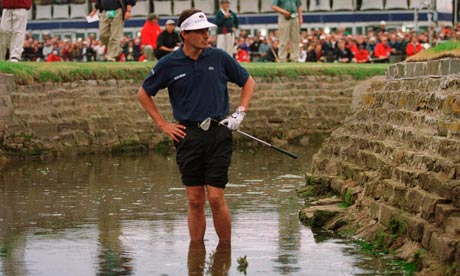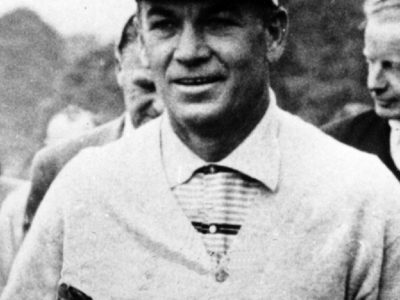By Fred Altvater
The 147th renewal of The Open Championship will be competed this month at one of the most iconic and difficult golf courses in the world, Carnoustie.
Golf fans will recall Jean Van de Velde’s unfriendly encounter with the burn and ultimate collapse on the 72nd hole in the 1999 Open Championship held at Car-Nasty. Arriving at the last hole with a three-shot lead, the Frenchman carded a triple-bogey seven that left him tied with Paul Lawrie and Justin Leonard to force a playoff. Lawrie would win the four-hole playoff and Van de Velde would go down in golf history as authoring the most catastrophic finish in a major championship. 
In 1953, Ben Hogan made his first and only trip to the British Isles to win The Open at Carnoustie. Every round he took an aggressive line off the tee at the par-5, 567-yard sixth hole, a particularly difficult shot that had to be carved between bunkers and the out-of-bounds stakes, which earned the “Wee Ice Mon” the respect and admiration of the Scottish golf fans.
 The Open Championship is the oldest major championship in the world, with the first being won by Willie Park Sr. in 1860. It has been conducted at Carnoustie on seven previous occasions and each time has been won by a golfing great.
The Open Championship is the oldest major championship in the world, with the first being won by Willie Park Sr. in 1860. It has been conducted at Carnoustie on seven previous occasions and each time has been won by a golfing great.
Tommy Armour won here in 1931, Henry Cotton in 1937, Hogan 1953, Gary Player 1968, Tom Watson 1975, Lawrie in 1999 and Padraig Harrington in 2007.
Carnoustie has also hosted two Senior British Opens and the 2011 Women’s British Open won by 22-year-old Yani Tseng. She became the youngest player ever, man or woman, to win five major championships and the outlook for future wins was bright. However, Carnoustie was the site of her fifth and last major championship victory to date.
Another memorable Carnoustie collapse was engineered by Sergio Garcia. In 2007 Garcia held a three-shot lead heading into the final day, but struggled throughout the day. A three-putt bogey at the last hole left him tied with Padraig Harrington. He lost the playoff to the Irishman and it was one of Garcia’s most crushing defeats, leaving deep scars.
The par-36 front nine can be stretched to 3,703 yards and includes only one par-5, the sixth, plus one par-3, the eighth. No. 9 at Carnoustie is called the “Railway Hole” as it runs along the tracks that border the edge of the property.
The back nine can play as long as 3,718 yards, with one par-5 and two par-3 holes, it is a par 35. In total at its longest, the course is over 7,400 yards with a par of 71 strokes.
With Barry Burn, a small creek, winding its way across the course, proper placement of each tee shot is of the utmost importance. The winner at Carnoustie must control his ball off the tee. Like all links-style courses, Carnoustie normally plays firm and fast. Players must take into account the roll out on each shot to assure it doesn’t end up at the bottom of the burn or a deep bunker.
Like all seaside courses, the wind is a prevalent issue facing golfers. If the wind blows scores will be over par, but when the wind lays, the course is gettable. In 1975 Tom Watson was 12-under-par for the tournament, besting Jack Nicklaus by a single stroke.
Carnoustie sits directly north across the bay from St. Andrews and is only a one-hour’s drive from the Auld Sod. Along with other iconic golf links; Muirfield, Musselburgh Links, Gleneagles and Kingsbarns, this area of Scotland is one of the most visited by golf fanatics.
Given the history and the importance of The Open Championship, plus the intrigue and difficulty of Carnoustie, this year’s competition to be crowned the “Champion Golfer of the Year” should prove to be a must-watch for any golf fan.










